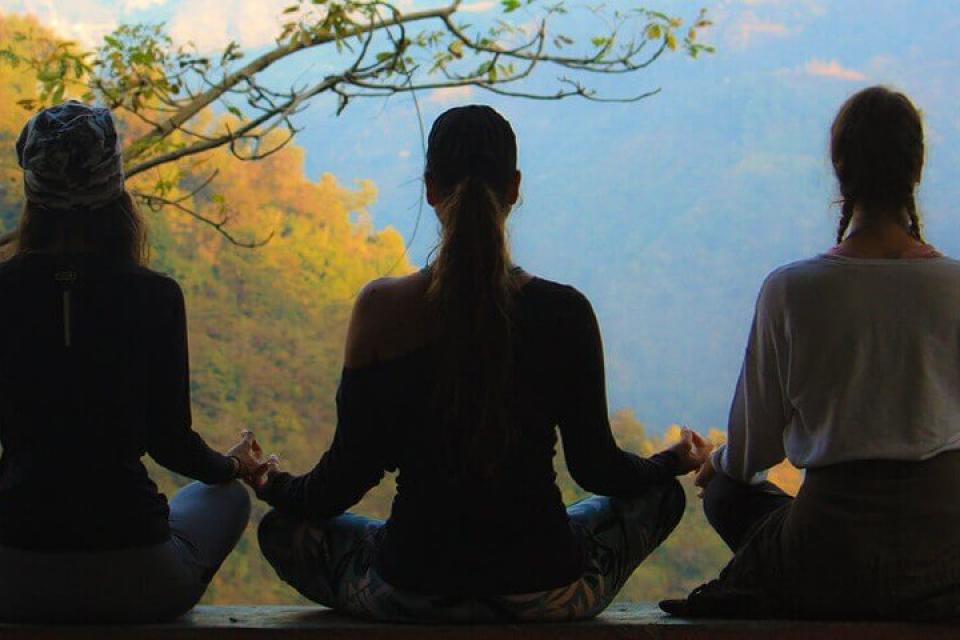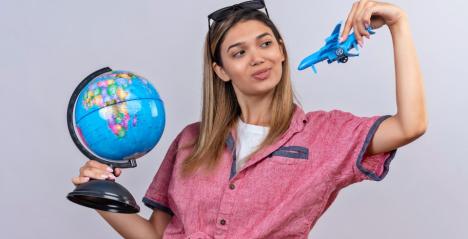Yoga is more than a physical workout because it looks to connect the mind and the body. Mostly, an effective yoga session is identified by a set of exercises, known as yoga postures, along with breathing techniques and meditation; these components together form an efficient yoga regimen.
If you find that an asana is difficult or painful, then there are various ways to modify the pose that will help you the most out of your session. Yoga instructors make use of props like chairs, blocks, straps, and blankets to help students reach maximum potential from their yoga asanas. There is no standard yoga practice, which means it’s not a one-size-fits-all exercise; yoga practitioners will have to come up with yoga exercises that suit the individual to reap the most benefits.
An introduction to Yoga asanas
Yoga believes that the mind is a pendulum that swings from the past to the future, going from emotions like regret to anger, and fear along with bouts of anxiety, as well as sorrow and happiness. When you perform various types of asanas, they allow you to harmonize your body and mind, thereby bringing about composure. There is more to asanas than physical exertion, and they bring about a balance of ease and effort. This means that during Yoga, the student can put effort into each pose which will eventually help them relax. They help enhance flexibility and expand our mind, as well.
When you follow a list of yoga asanas, it should be done with a sense of awareness. This is important when it comes to breathing techniques. Each movement brings about awareness of a body part; for instance, when you raise your arms, you are aware of your movements and which way you should relax.
Yoga poses for beginners
There are 10 primary poses that tend to complete a yoga workout, especially if it’s meant for beginners, here are some easy yoga poses
For de-stressing:
Child’s Pose
This is one of the primary calming poses, and it’s a great pause position. You can get into this pose when you feel like taking a break from asanas that require too much effort. It will help you rest and recuperate before you move on to the next pose. Child’s pose will gently stretch your lower back, open up your hips, thighs, knees, and ankles, as well as relax your shoulders, spine and neck.
When must you do it?
Do this pose when you want a stretch through your neck, spine and hips.
When should you skip it?
Avoid this pose if you suffer from ankle or knee issue, experience high blood pressure, or are pregnant.
How can you modify the Child’s pose?
Just like any other yoga asanas, the Child’s pose can be modified to suit the student. You can rest your head on the cushion and place a rolled towel under your ankles for extra support, in case you get uncomfortable.
Focus on relaxing your muscles and breathing techniques.
Corpse Pose:
Usually, a yoga session will end with this pose because it will allow you to relax your muscles. Some people may find it challenging to stay still in this pose, but the more you practice, the more relaxing and meditative this pose will be.
You can modify this pose by setting a rolled towel or blanket under your head or knees, especially if you’re having trouble with your lower back.
For strength
Downward facing dog:
This yoga pose is done to strengthen the arms, back, and shoulders. It’s also known to stretch the hamstrings, calves and the arches of your feet. It’s a great exercise to relieve any back pain.
When should you skip it?
This pose can cause some strain on the wrist, and it’s not recommended for people who experience carpal tunnel syndrome or other wrist issues. Also, patients who are prone to high blood pressure or in the last trimester of their pregnancy should avoid this pose.
How to modify the downward-facing dog?
You can pose with your elbows to the ground, and this will carry the weight off the wrists. You can also make use of blocks to feel comfortable.
It’s vital that you distribute the weight evenly through the palms and lift your hips away from the shoulders.
Plank pose:
This is a great yoga technique that helps build core strength, along with toning the shoulders, legs, and arms. It’s a great pose if you want to build upper body strength.
When should you skip it?
Skip this pose if you suffer from carpal tunnel syndrome, lower back pain, or any other wrist issues. When you do the plank, imagine the lengthening the back of your neck and spine.
Four limbed Staff Pose:
This is a push-up variation that comes after performing the plank, and it’s a common sun salutation in the yoga sequence. This is a great pose if you are ready to advance from the beginner’s level. This is great because it makes your arms strong and manages to tone your abdomen as well.
When do you have to skip it?
Skip this pose if you have an issue with your wrist, recovering from a shoulder injury, or experience lower back pain.
How to modify this pose?
You can modify this pose by balancing on your knees. Keep your palms flat on the floor and lift the shoulders away from the floor.
For Flexibility:
The Seated Half Spinal Twist Pose:
The twist asana can help increase flexibility for all your back muscles. From all the various yoga postures, this one will help relieve stiffness while stretching the shoulders, hips, and chest. The pose will also get rid of any tension that is settled at the centre of your back.
When should you skip it?
If you have any back injury.
How to modify it?
If bending your right knee seems uncomfortable, then keep it straight in front of you.
Be aware of your breathing patterns, when you exhale lift your torso and twist.
The link between Yoga and meditation
There are plenty of yoga asanas that help with strength and relaxation, this is where meditation plays a huge role as well. When you learn the various Yoga poses in a class, you will get an opportunity to scan your body while being aware of how you feel through the poses. For instance, you may feel that your balance on the right leg is better than the left, or that you can stretch one side of your better than the other. This is how Yoga helps students be mindful and helps them meditate effectively as well.
Yoga and meditation help make us more aware of our body, and we begin to train our attention span. This helps us notice our postures all through the day and not just in yoga class.
Focusing on your breathing
When it comes to mindfulness and meditation, it’s important to take control of the breathing techniques. They are a vital part of Yoga because it will help you stay focused, reduce stress, relax the central nervous system, and calm the mind. When you get a hold of the yoga breathing techniques then you will automatically find a way into meditation. Recently, people have found that the meditation aspects of Yoga are more useful to them than physical exercises. This is because they need some time to relax, release, and recalibrate.
Abdominal breathing- This technique is also known as belly breathing, and it’s a common breathing process that is found in basic yoga classes. When practicing this technique, you encourage efficient airflow through the body and healthy living in general.












